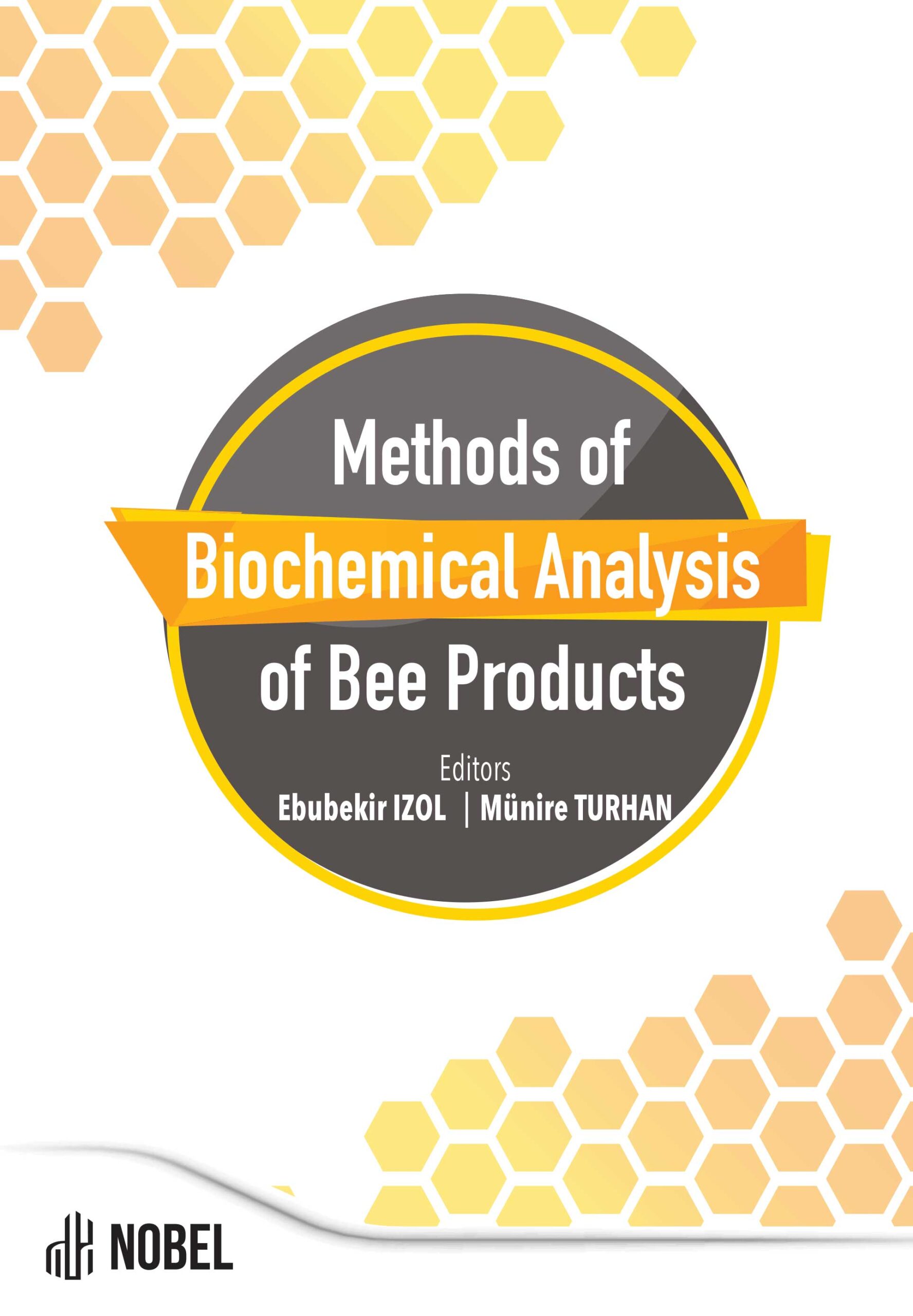Naphthalene Analysis in Honey by Gas Chromatography Technology
Ebubekir Izol (Author)
Release Date: 2024-06-07
Honey is a very important natural food consumed as a source of healing. However, it can become harmful due to different chemicals mixed into the content of honey. Naphthalene is a carcinogenic hydrocarbon compound that forms residues in honey. Naphthalene, which beekeepers use to prevent honeycombs from mothballing but are prohibited from using, has many [...]
Media Type
Buy from
Price may vary by retailers
| Work Type | Book Chapter |
|---|---|
| Published in | Methods of Biochemical Analysis of Bee Products |
| First Page | 1 |
| Last Page | 15 |
| DOI | https://doi.org/10.69860/nobel.9786053359326.1 |
| Page Count | 15 |
| Copyright Holder | Nobel Tıp Kitabevleri |
| License | https://nobelpub.com/publish-with-us/copyright-and-licensing |
Ebubekir Izol (Author)
Bingöl University
https://orcid.org/0000-0003-0788-4999
3Dr. Ebubekir İZOL is an important scientist who stands out with his scientific studies on bees and bee products. He is an editor and chapter author of many international scientific books on bees and bee products. He also has articles in international scientific journals. His works are read by many people around the world. He has added much new information to the scientific literature on bees and bee products. He is working on antioxidants, enzyme inhibition properties, phytochemical and mineral contents of bee products, biochemical analysis of bee products, and bee diseases.
İzol, E. (2023). “Phytochemicals in Honey and Health Effects”, In Honeybees, Plants and Health, ed. Koçyiğit M., İzol E., Haspolat Y.K., Orient Publications, 85-96. ISBN: 978-625-6598-03-4.
İzol, E., Gülçin, İ., Yılmaz, M.A. (2023). “Health Effects of Honey and Honey Sherbet with Spiritual and Scientific Sources”, In Functional Foods, ed. Haspolat Y.K., Kavak V., Asena M., Orient Publications, 89-95.
İzol, E., Turhan, M. (2024). “Antioxidant Potential of Honey with Recent In-Vitro Studies”. 8. International Palandöken Scientific Studies Congress Book, p:300-307, ISBN: 978-625-367-668-1.
İzol, E. & Bengü, A.Ş. (2022). “Apiterapi ve Klinik Uygulamalar”, In Sağlık Bilimlerinde İnovatif Yöntemler, Teoriler ve Uygulamalar, ed. Bengü A.Ş., İzol E., Iksad International Publishing House,1, 21.
Turhan, M., İzol, E. (2023). “Healing Honey and Harmful Pesticides”, In 2.International Selçuk Scientific Researches Congress Book p:321-328, ISBN: 978-625-367-391-8, October 21-22, Konya, Türkiye.
İzol, E. (2023). Bazı Arı Ürünlerinin (Bal, Polen, Propolis, Arı Sütü ve Arı Ekmeği) LC-MS/MS ile Sekonder Metabolitlerinin ve Biyolojik Aktivitelerinin Belirlenmesi. Doktora tezi. Atatürk Üniversitesi Fen Bilimleri Enstitüsü, Erzurum.
İzol, E. (2024). Determination of Naphthalene Concentration in Honey a New Method using by HS-GC/MS (Headspace-Gas Chromatography/Mass Spectrometry). KSU Journal of Agriculture and Nature, 27(5).
Albero, B., Sánchez-Brunete, C., & Tadeo, J. L. (2003). Determination of polycyclic aromatic hydrocarbons in honey by matrix solid-phase dispersion and gas chromatography/mass spectrometry. Journal of AOAC International, 86(3), 576-582.
Seidi, S., Abolhasani, H., Razeghi, Y., Shanehsaz, M., & Manouchehri, M. (2020). Electrochemically deposition of ionic liquid modified graphene oxide for circulated headspace in-tube solid phase microextraction of naphthalene from honey samples followed by on-line liquid chromatography analysis. Journal of Chromatography A, 1628, 461486.
Yost, E. E., Galizia, A., Kapraun, D. F., Persad, A. S., Vulimiri, S. V., Angrish, M., ... & Druwe, I. L. (2021). Health effects of naphthalene exposure: a systematic evidence map and analysis of potential considerations for dose–response evaluation. Environmental health perspectives, 129(7), 076002.
| onix_3.0::thoth | Thoth ONIX 3.0 |
|---|---|
| onix_3.0::project_muse | Project MUSE ONIX 3.0 |
| onix_3.0::oapen | OAPEN ONIX 3.0 |
| onix_3.0::jstor | JSTOR ONIX 3.0 |
| onix_3.0::google_books | Google Books ONIX 3.0 |
| onix_3.0::overdrive | OverDrive ONIX 3.0 |
| onix_2.1::ebsco_host | EBSCO Host ONIX 2.1 |
| csv::thoth | Thoth CSV |
| json::thoth | Thoth JSON |
| kbart::oclc | OCLC KBART |
| bibtex::thoth | Thoth BibTeX |
| doideposit::crossref | CrossRef DOI deposit |
| onix_2.1::proquest_ebrary | ProQuest Ebrary ONIX 2.1 |
| marc21record::thoth | Thoth MARC 21 Record |
| marc21markup::thoth | Thoth MARC 21 Markup |
| marc21xml::thoth | Thoth MARC 21 XML |

